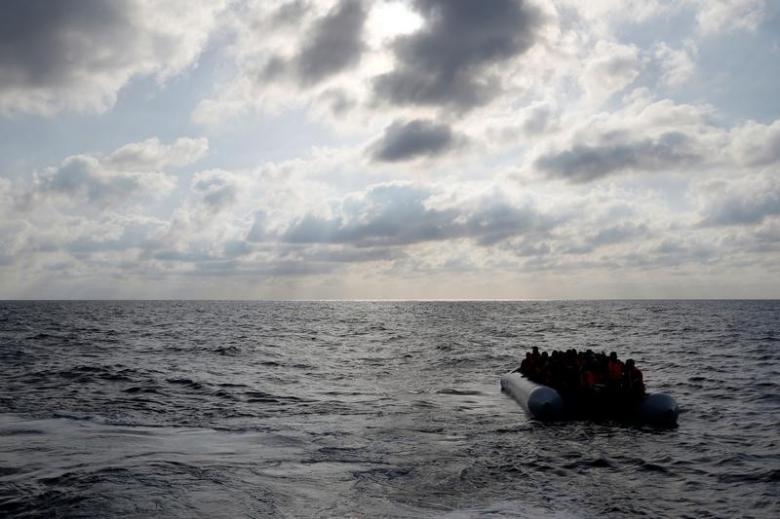Ireland’s Defense Forces said on Monday that an Irish naval ship rescued 712 people including pregnant women and infants off the coast of the Libyan capital as part of an international migrant rescue effort.
The LÉ Eithne ship led the rescue of multiple vessels in distress 40 kilometers northwest of Tripoli throughout Sunday.
Six migrants, including one baby, were revived from states of unconsciousness.
The ship will transport the people, including 14 pregnant women and four infants below the age of four months, to a designated “port of safety” to be handed over to Italian authorities.
“I’m very proud to say all lives were saved, no lives were lost. It was a complex operation where lives were at stake at every turn over a full eight-hour period,” Commander Brian Fitzgerald told national broadcaster RTE from the ship.
“Overall, they were really in a wretched condition but in all cases healthy enough to undertake the journey to a port of safety.”
Half a million people have crossed the Mediterranean from Libya to Italy over the past four years, mainly sub-Saharan Africans who pay smugglers to shepherd them across the desert to Libya, and onward to Europe in unseaworthy dinghies. An estimated 13,000 of them have drowned.
According to Reuters, European governments want to stop the migrants and break the grip of the smugglers. But more than four months after Italy and the European Union launched a new push to tackle the crisis, accounts by migrants, aid workers and officials show that effort is all but failing to make a difference.
When Libyan authorities do catch migrants, they take them to detention centers nominally under the control of the government, which already house about 8,000 people. Though Europeans have pledged funding to improve the camps, some are still so cramped that migrants have to sleep sitting up.
At Tripoli’s Tariq al-Siqqa migrant center, where visiting dignitaries are brought, flowers have been planted in the
courtyard and wash-basins installed. But behind a padlocked metal gate hundreds of migrants still languish, crammed side to side on mattresses in a single unventilated room.
“They shut us up, they imprison us, they ask us for money,” said one 22-year-old from Guinea, who has been in the center since March, when he was intercepted by the Libyan coastguard with about 120 other migrants shortly after they set off for Italy. “They hit people.”
Since last year, the EU has made a push to cooperate with a new Libyan government backed by the United Nations. Coastguard training began on board EU ships in October. In February, Italy signed a memorandum of understanding with Tripoli that the EU quickly endorsed, earmarking 90 million euros.
But Europe has delivered little concrete support. “They want us to be Europe’s policeman. At the same time, that policeman needs resources,” said naval coastguard spokesman Ayoub Qassem. “I challenge anyone to work in these conditions.”
Tarek Shanbour, a senior coastguard official, also said: “We meet, we talk, we take decisions, we make agreements, but on the ground there is no execution.”
